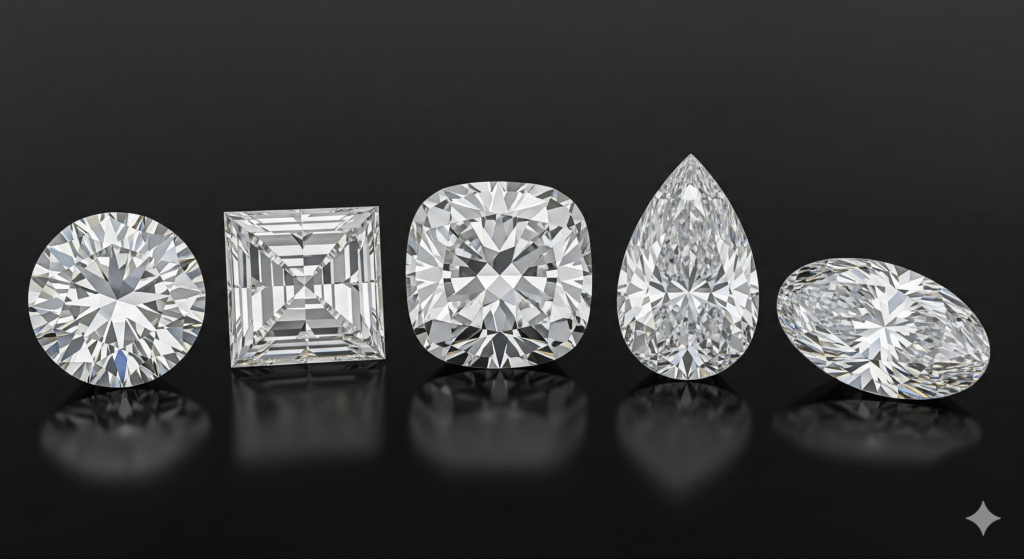Diamond 4Cs Explained for Retail Buyers

There are several characteristics that you should learn about a diamond if you are a retail buyer. These characteristics are cut, colour, clarity and carat. Knowing about these qualities can tell a lot about the diamond. Learning about the 4Cs of diamonds is important as they tell you about the quality and value of the diamond you are purchasing from the supplier.
If you are in the retail jewellery business, selecting a supplier for diamonds should be based on these four factors, without which you might be compromising on the quality. Retailers must ensure that they have the optimum quality diamond, which can satisfy the needs and demands of their customers and also build trust for the long-term growth of their business. In this blog, we will understand the 4Cs of diamonds that help retail jewellers make informed decisions when it comes to choosing suppliers.
What are the Diamond 4Cs and why do they matter for Retail Buyers?
#1: Cut
The cut of the diamond tells you about the facet arrangement, symmetry, and the proportions you will see in the diamond. Every diamond lover will be able to distinguish between an ideal cut from a less ideal one, which tells them about the quality of the diamond.
The sparkle of the diamond is very much dependent on the ideal cut, which is why it is one of the most important factors that tells you about the value and quality of the diamond. The dazzling appearance of the diamond comes from the well-cut diamond, which is the result of light reflection. A superior cut in the diamond highlights its quality, which is much more important than the size itself.
#2: Colour
The second C, which matters while assessing a diamond, is its colour. The colour grading of a diamond is done on a scale of D to Z, which highlights a colourless to a yellowish tone diamond. Most jewellery retailers know that the most valuable and rarest diamonds are the ones coming in the range of D to F scale, which are colourless diamonds. However, if the diamond starts to turn yellow, it means that it is not of optimum quality. The warm tone in diamonds is present between the scale of K to M, which is a highly budget-friendly option as compared to the colourless D to F scale diamonds.
#3: Clarity
The third characteristic of determining the quality of the diamond is its clarity, which essentially tells the diamond’s purity. The stone purity matters for many diamond buyers because it is its integrated characteristic. If there are smaller and less noticeable inclusions in the diamond stone, it means that it offers better value and clarity. Jewellery retailers should use a magnifying glass to check the inclusions in the diamond, which means that the clarity of the diamond is of top quality. Often, the visible inclusions in the stone impact the sparkle of the diamond, which overall affects the quality of the stone and is not considered a top-quality diamond.
#4: Carat
The last characteristic of assessing the quality of the diamond is its carat weight, which tells about the rarity and size of the stone. One metric carat of diamond is equal to 0.2 g, which is its ideal measurement unit for the weight of the diamond. The larger stones are rare to find; they are highly valuable as well. It is often seen that the two diamond stones having equal weight can be of different quality and offer different prices, which is due to the clarity, colour and cut difference.
To Sum Up
Retail buyers should know about the difference between a top-quality diamond from an ordinary one so that they can make an informed choice about which supplier they should turn to. To find more information about top jewellers, you can browse jewellers near you from the TopJewellers website.
